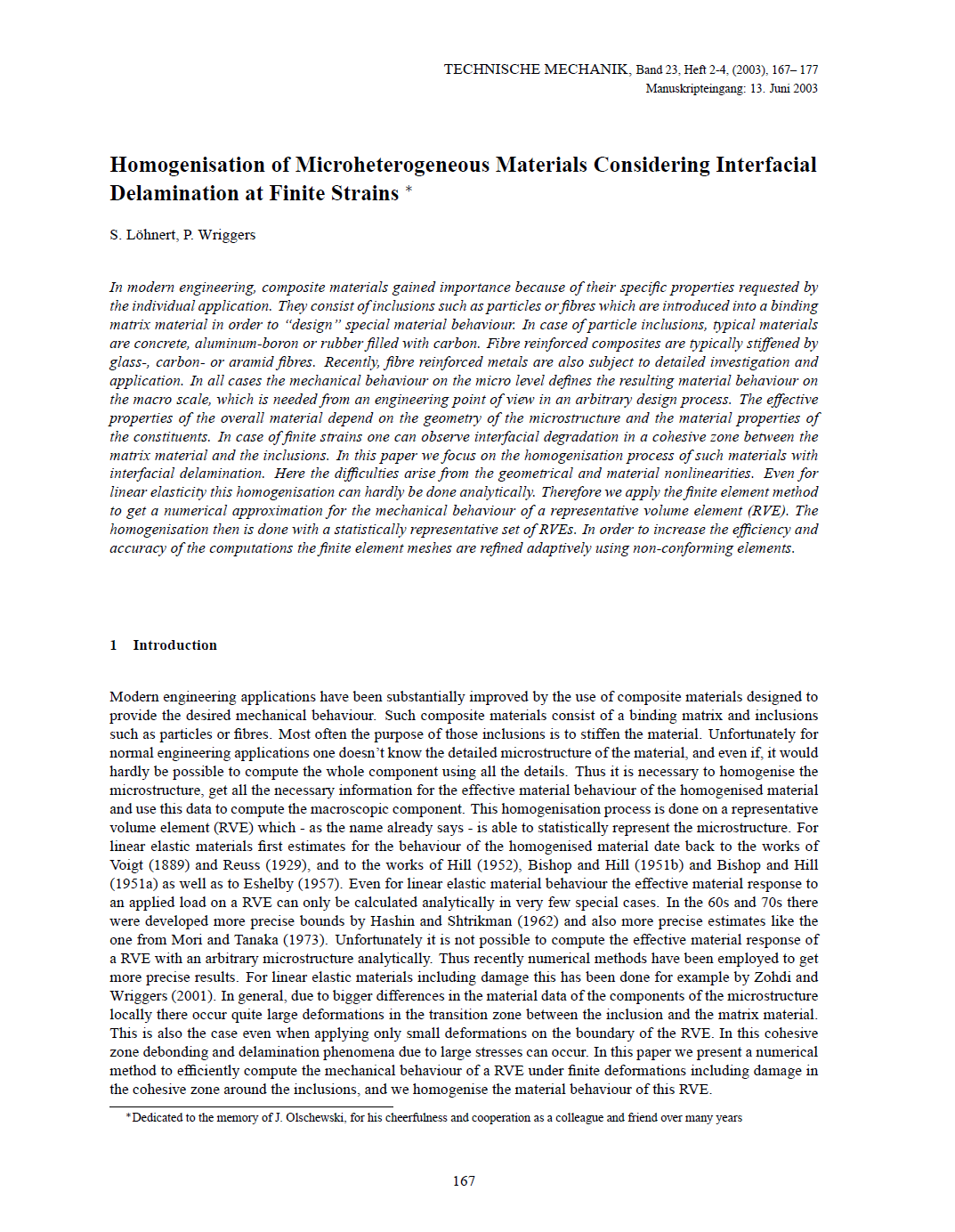Homogenisation of Microheterogeneous Materials Considering Interfacial Delamination at Finite Strains
Abstract
In modern engineering, composite materials gained importance because of their specific properties requested by the individual application. They consist of inclusions such as particles or fibres which are introduced into a binding matrix material in order to “design” special material behaviour. In case of particle inclusions, typical materials are concrete, aluminum-boron or rubber filled with carbon. Fibre reinforced composites are typically stiffened by glass-, carbon- or aramid fibres. Recently, fibre reinforced metals are also subject to detailed investigation and application. In all cases the mechanical behaviour on the micro level defines the resulting material behaviour on the macro scale, which is needed from an engineering point of view in an arbitrary design process. The effective properties of the overall material depend on the geometry of the microstructure and the material properties of the constituents. In case of finite strains one can observe interfacial degradation in a cohesive zone between the matrix material and the inclusions. In this paper we focus on the homogenisation process of such materials with interfacial delamination. Here the difficulties arise from the geometrical and material nonlinearities. Even for linear elasticity this homogenisation can hardly be done analytically. Therefore we apply the finite element method to get a numerical approximation for the mechanical behaviour of a representative volume element (RVE). The homogenisation then is done with a statistically representative set of RVEs. In order to increase the efficiency and accuracy of the computations the finite element meshes are refined adaptively using non-conforming elements.





